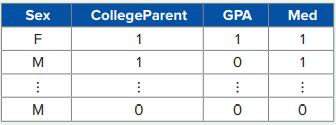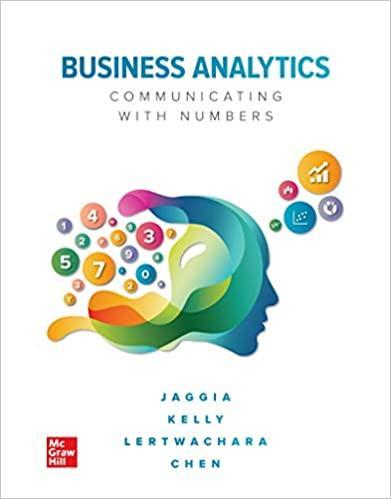Admission to medical schools in the United States is highly competitive. The acceptance rate to the top
Question:
Admission to medical schools in the United States is highly competitive. The acceptance rate to the top medical schools could be as low as 2% or 3%. With such a low acceptance rate, medical school admissions consulting has become a growing business in many cities. In order to better serve his clients, Paul Foster, a medical school admissions consultant, wants to build a data-driven model to predict whether or not a new applicant is likely to get accepted into one of the top 10 medical schools. He collected a database of 1,992 past applicants to the top 10 medical schools with the following information: Sex (F = female, M = male), CollegeParent (1 if parents with college degrees, 0 otherwise), GPA (1 if undergraduate GPA of 3.50 or higher, 0 otherwise), Med (1 if accepted to the top 10 medical school, 0 otherwise). A portion of the data set is shown in the accompanying table. 
a. Partition the data to develop a naïve Bayes classification model. Report the accuracy, sensitivity, specificity, and precision rates for the validation data set.
b. Generate the decile-wise lift chart. What is the lift value of the leftmost bar? What does this value imply?
c. Generate the ROC curve. What is the area under the ROC curve (or AUC value)?
d. Can the naïve Bayes model be used to effectively classify the medical school applicant data? Explain your answer.
Step by Step Answer:

Business Analytics Communicating With Numbers
ISBN: 9781260785005
1st Edition
Authors: Sanjiv Jaggia, Alison Kelly, Kevin Lertwachara, Leida Chen





